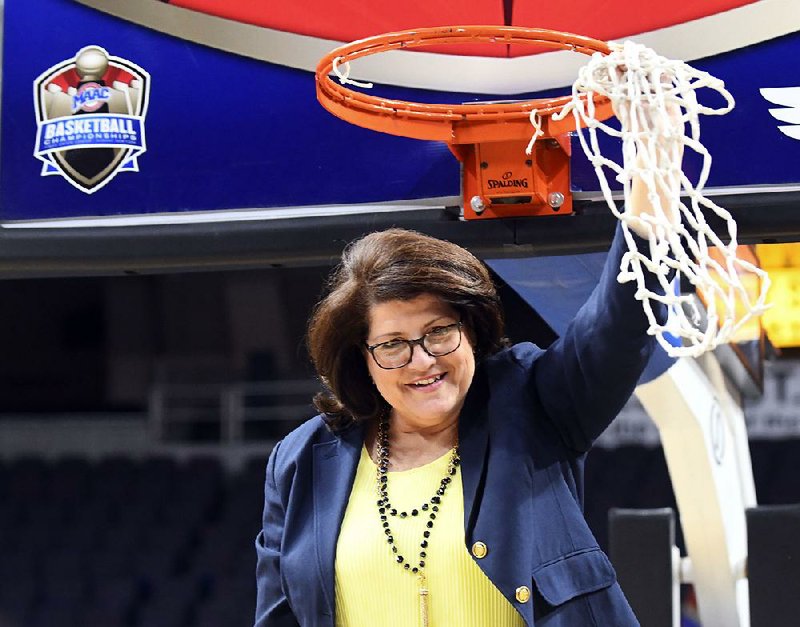NEW YORK -- Quinnipiac Coach Tricia Fabbri was thrilled when the bracket popped up and her team was listed as a 12 seed.
It meant the Bobcats were playing Marquette on a neutral court, giving them a better chance for a victory or two in the NCAA Women's Tournament.
Winning one game would be huge for Quinnipiac, which is looking for its first tournament victory ever.
"We really were hoping for a neutral-court game and that's what we got against Marquette," Fabbri said. "We had to play at Maryland a few years ago and that's a really tough thing to ask any team do, beating a top school on their home floor."
For mid-major programs, the Sweet 16 seems to be the cap lately for NCAA success, despite at least one team advancing to the second weekend in six of the past seven seasons. Over the past decade, only three mid-major teams have broken through to the regional final of the NCAAs -- Xavier, Gonzaga and Dayton -- and none have reached a Final Four since Jackie Stiles led Missouri State in 2001.
It might be tough to see either list grow this year.
Unlike men's basketball, where more top players are leaving for the NBA after a season or two, that doesn't happen in women's basketball. Top teams like UConn, Notre Dame, Baylor, South Carolina all see their players stick around, making it that much tougher for smaller schools to have deep tournament runs.
"There are no one-and-done players on the women's side," said Oregon Coach Kelly Graves, who guided Gonzaga to the regional final in 2011 as an 11 seed.
Graves had six victories at Gonzaga when his team was seeded No. 11 or lower -- the most of anyone on the women's side. The Bulldogs hosted the opening two rounds in 2011 and then lost to Stanford at Spokane, Wash., in the regional final.
"That team we had featured a lot of future WNBA players, so we probably could have won on the road, too, but playing at home definitely made a huge difference," Graves said.
The Bulldogs were the last mid-major double-digit seed to host games in the NCAAs. That won't happen again anytime soon; the NCAA switched to having the top 16 seeds host the opening rounds last year.
"We saw that the last five or six years with Princeton and Green Bay, you can't get two better resumes," said ESPN writer Graham Hays. "If they couldn't get into the top four seed lines, I don't know how you do it."
Before he was at Ohio State, Kevin McGuff led Xavier to a regional final in 2010 as a three seed and lost on a last-second basket to Stanford. Xavier was in the Atlantic 10 at that point before moving to the Big East
"I think it is really tough for mid-majors to be a top-four seed anymore," he said. "You have to schedule so aggressively out of conference, and that's hard these days because teams won't play you. We were fortunate that we got good enough that power-five schools said it's not a bad loss if we play them. It won't hurt us."
This year, No. 8 Green Bay is the highest seeded mid-major program. Its reward for a first-round victory is most likely host Notre Dame in the second round. It's much better for a mid-major team to get an 11 or 12 seed.
"You're really rooting for that when the bracket pops up," Fabbri said. "Get the crowd behind you and you have a chance. And that's all any of us want."
Sports on 03/16/2017
